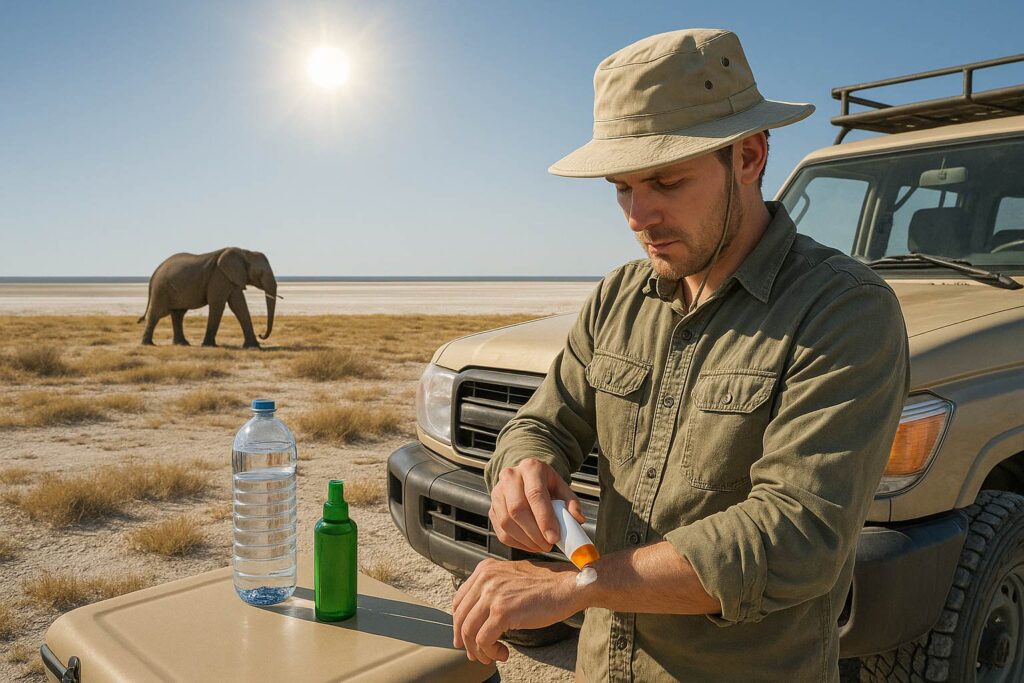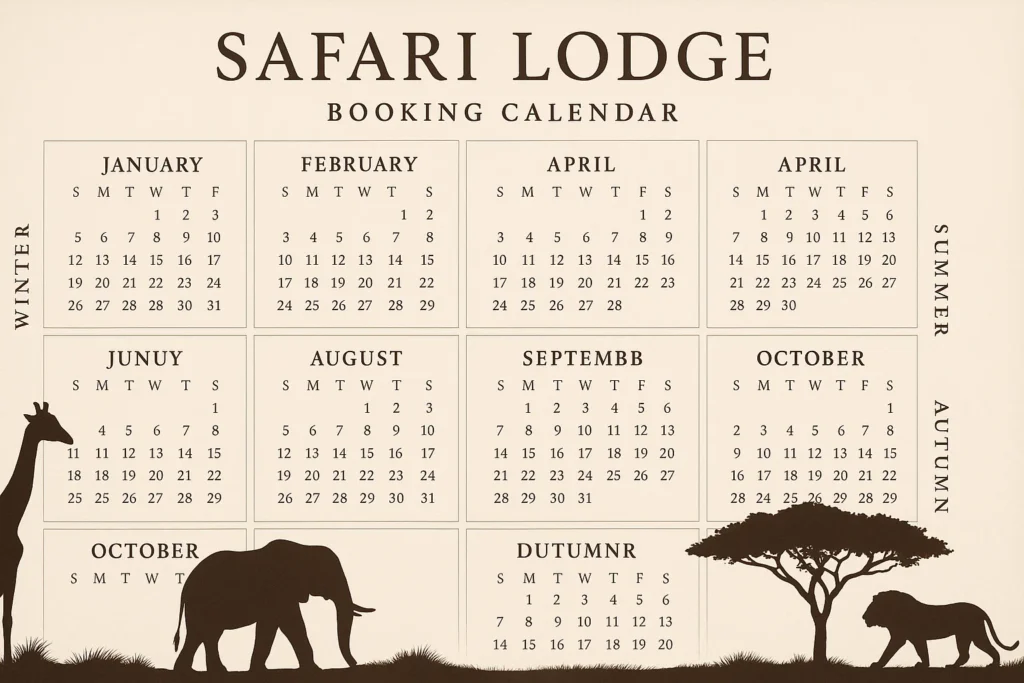Exploring Etosha National Park is a once-in-a-lifetime experience—but staying safe and healthy should be part of the adventure. From understanding malaria risks and coping with Namibia’s intense sun and heat, to staying alert during wildlife encounters, this guide offers practical, locally-relevant tips to help you enjoy Etosha with confidence and care. Whether you’re planning a dry season self-drive or a wet season safari, here’s what you need to know to protect yourself and respect the park’s unique environment.
Malaria Risk & Protection
- Low risk in dry season (May–October): Etosha’s bone-dry winters greatly reduce mosquito breeding, and the park is effectively malaria-free during these months.
- Wet season caution (November–April): A slight malaria risk exists, especially near pan margins and waterholes—health authorities advise prophylaxis during this period.
- Recommended prevention:
- Take antimalarial tablets as advised (e.g., Malarone, doxycycline).
- Use DEET-based repellent, wear long sleeves and trousers at dusk, and sleep under nets where needed.
- Consult your travel clinic to finalize a regimen based on your travel dates.
Sun & Heat Readiness
- Etosha’s open savannah and salt pans deliver intense sun and high temperatures—daytime highs often reach 30–33 °C.
- Prevent heat-related issues:
- Apply high-SPF sunscreen, and reapply frequently.
- Wear lightweight, long-sleeved shirts, pants, a wide-brimmed hat, and UV-blocking sunglasses.
- Stay hydrated with ample clean water, avoid midday sun, and rest in shade regularly.
Wildlife & Self-Drive Safety
- Park rules first: Always stay in your vehicle except at designated rest camps (Okaukuejo, Namutoni, Halali) and viewpoints.
- Respect animal space: Never approach or drive between a herd—elephants and rhinos may charge, and big cats are easily startled.
- Road safety:
- Maintain a 60 km/h speed limit on gravel roads, be wary of wildlife crossing, and always keep fuel and water stocked.
- Reserve 4×4 vehicles if visiting during wet season; otherwise, main gravel roads remain accessible to 2WD.
Additional Health Precautions
- Insect & tick vigilance:
- Use repellent containing DEET or picaridin after dusk to avoid mosquitoes and ticks.
- On bush walks, wear long trousers tucked into socks, check for ticks, and remove promptly to prevent tick-borne illness.
- Food & water hygiene:
- Stick to well-cooked meals, avoid unpeeled raw fruit, and drink bottled or purified water to avoid stomach upsets.
- Vaccinations:
- No mandatory shots unless arriving from yellow fever zones, but routine vaccines (tetanus, polio, hepatitis) are strongly recommended.
Park-Specific Tips: Etosha Edition
- Waterhole camps:
- Many camps (e.g., Okaukuejo) include fenced waterholes with floodlights—excellent for safe wildlife viewing at night.
- Rhino conservation concern:
- Rising rhino poaching has occurred—avoid driving off-track and support anti-poaching efforts.
Quick Health & Safety Checklist for Etosha
| Concern | Dry Season (May–Oct) | Wet Season (Nov–Apr) |
|---|---|---|
| Malaria | Extremely low risk | Moderate risk—prophylaxis recommended |
| Mosquitoes/Ticks | Wear repellent at dusk | DEET repellent, long clothing essential |
| Sun exposure | High SPF, shade, hats | Essential daily |
| Hydration | Bring lots of bottled water | Critical due to heat and humidity |
| Road access | 2WD okay; fill fuel/water often | 4×4 recommended; roads may become impassable |
| Wildlife safety | Stay in vehicle, follow guide instructions | Same rules apply year-round |
Final Advice
- Plan visits in dry season for minimal malaria risk and optimal wildlife viewing.
- Bring prophylaxis and repellent, and pack protective clothing and sun gear.
- Choose self-drive or guided safaris, but always respect wildlife distance and speed limits.
- Stay in park camps for secure, after-dark viewing and supply access.
- Stay alert to poaching alerts, especially around rhinos, and support conservation.
With these guidelines, you’ll enjoy a safe, healthy, and unforgettable safari in Etosha, while respecting its fragile ecosystems and majestic inhabitants. Safe travels!
FAQs
It’s not mandatory, but highly recommended during the rainy season (November to April). Always consult a travel health specialist before your trip.
Bottled or purified water is the safest choice. Some lodges provide treated water, but it’s best to carry your own supply.
Yes—provided you follow safety rules: stay in your vehicle, avoid sudden movements, and choose fenced accommodations with child-friendly facilities.
There are basic first-aid stations in the park, but serious cases require evacuation to hospitals in Tsumeb or Otjiwarongo.
Yes—Etosha is one of Africa’s top self-drive parks. Just follow speed limits, fuel up frequently, and avoid driving at night.






